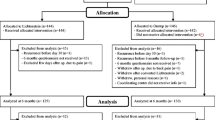Abstract
Background: Pain is the most common complaint after inguinal hernia surgery. The present study was undertaken to evaluate the significance of various perioperative clinical factors on the severity of postoperative pain following endoscopic totally extraperitoneal (TEP) inguinal hernioplasty.Methods: Between November 1999 and December 2002, 509 patients who underwent unilateral (n = 389) and bilateral (n = 120) TEP were recruited for this study. There were 491 men and 18 women. Severity of postoperative pain at rest and on coughing was assessed by a linear analogue pain score (scale, 0–10) on a daily basis after operation. Univariate and multivariate analyses were performed to identify the significant independent factors affecting pain. Results: By univariate analysis, pain scores at rest were significantly higher in young (≤65 years) female patients, as well as patients who underwent unilateral and day case TEP. Clinical factors associated with a significantly higher pain score on coughing included mesh fixation by stapling, female sex, and age (≤65 years). Other factors, including unilateral vs bilateral TEP, seroma formation, direct vs indirect hernia, primary vs recurrent hernia, and operative time, had no impact on postoperative pain. On multiple regression analysis, age and sex were found to be independent predictive factors for mean daily pain score at rest. Independent factors influencing mean pain score on coughing included age, sex, and prosthetic stapling. Conclusions: Patient age and sex are the most significant factors determining the degree of pain after TEP. Analgesic therapy should therefore be adjusted in accordance with the age of the patient. With regard to operative factors, avoidance of prosthetic stapling might help to reduce the severity of pain on coughing.






Similar content being viewed by others
References
JW Bellville WH Forrest Jr E Miller BW Brown Jr (1971) ArticleTitleInfluence of age on pain relief from analgesics; a study of postoperative patients. JAMA 217 1835–1841 Occurrence Handle1:STN:280:CS6B1M%2FpsFI%3D Occurrence Handle5109724
T Callesen K Bech R Nielsen J Andersen P Hesselfeldt O Roikjaer H Kehlet (1998) ArticleTitlePain after groin hernia repair. Br J Surg 85 1412–1414 Occurrence Handle10.1046/j.1365-2168.1998.00864.x Occurrence Handle1:STN:280:DyaK1cvltlarug%3D%3D Occurrence Handle9782027
W Ellermeier W Westphal (1995) ArticleTitleGender differences in pain ratings and pupil reactions to painful pressure stimuli. Pain 61 435–439 Occurrence Handle10.1016/0304-3959(94)00203-Q Occurrence Handle1:STN:280:BymD2Mfpsl0%3D Occurrence Handle7478686
H Kehlet K Holte (2001) ArticleTitleEffect of postoperative analgesia on surgical outcome. Br J Anaesth 87 62–72 Occurrence Handle10.1093/bja/87.1.62 Occurrence Handle1:STN:280:DC%2BD3MvhtFCksw%3D%3D Occurrence Handle11460814
E Keogh M Herdenfeldt (2002) ArticleTitleGender, coping and the perception of pain. Pain 97 195–201 Occurrence Handle10.1016/S0304-3959(01)00427-4 Occurrence Handle12044616
H Lau F Lee (2001) ArticleTitleDeterminant factors of pain after ambulatory inguinal herniorrhaphy: a multi-variate analysis. Hernia 5 17–20 Occurrence Handle1:STN:280:DC%2BD3MzhsFGgug%3D%3D Occurrence Handle11387717
H Lau F Lee (2002) ArticleTitleA prospective comparative study of needlescopic and conventional endoscopic extraperitoneal inguinal hernioplasty. Surg Endosc 16 1737–1740 Occurrence Handle10.1007/s00464-002-9027-z Occurrence Handle1:STN:280:DC%2BD38jis1eqsg%3D%3D Occurrence Handle12085148
H Lau NG Patil F Lee WK Yuen (2002) ArticleTitleA prospective trial of analgesia following endoscopic totally extraperitoneal (TEP) inguinal hernioplasty. Surg Endosc 16 159–162 Occurrence Handle10.1007/s00464-001-8106-x Occurrence Handle1:STN:280:DC%2BD383isFGjtA%3D%3D Occurrence Handle11961629
MS Liem Y van der Graaf CJ van Steensel RU Boelhouwer GJ Clevers WS Meijer LP Stassen JP Vente WF Weidema AJ Schrijvers et al. (1997) ArticleTitleComparison of conventional anterior surgery and laparoscopic surgery for inguinal-hernia repair. N Engl J Med 336 1642–1647 Occurrence Handle10.1056/NEJM199705293362201
InstitutionalAuthorNameMRC Laparoscopic Groin Hernia Trial Group (1999) ArticleTitleLaparoscopic versus open repair of groin hernia: a randomised comparison. Lancet 354 185–190 Occurrence Handle10421299
AK Moore S Vilderman W Lubenskyi J McCans GS Fox (1990) ArticleTitleDifferences in epidural requirements between elderly and young patients after abdominal surgery. Anesth Analg 70 316–320
DS O’Riordain P Kelly PG Morgan FB Keane WA Tanner (1998) ArticleTitleA randomized controlled trial of extraperitoneal bupivacaine analgesic in laparoscopic hernia repair. Am J Surg 176 254–257 Occurrence Handle1:CAS:528:DyaK1cXmvFGisro%3D Occurrence Handle9776153
DJ Pavlin C Chen DA Penaloza NL Polissar FP Buckley (2002) ArticleTitlePain as a factor complicating recovery and discharge after ambulatory surgery. Anesth Analg 95 627–634
G Pickering D Jourdan A Eschalier C Dubray (2002) ArticleTitleImpact of age, gender and cognitive functioning on pain perception. Gerontology 48 112–118
LB Ready HS Chadwick B Ross (1987) ArticleTitleAge predicts effective epidural morphine dosage after abdominal hysterectomy. Anesth Analg 66 1215–1218
JL 3rd Riley ME Robinson EA Wise CD Myers RB Fillingim (1998) ArticleTitleSex differences in the perception of noxious experimental stimuli: a meta-analysis. Pain 74 181–187 Occurrence Handle10.1016/S0304-3959(97)00199-1 Occurrence Handle9520232
GN Saff RA Marks M Kuroda JP Rozan R Hertz (1998) ArticleTitleAnalgesic effect of bupivacaine on extraperitoneal laparoscopic hernia repair. Anesth Analg 87 377–381
AM Unruh (1996) ArticleTitleGender variations in clinical pain experience. Pain 65 123–167 Occurrence Handle10.1016/0304-3959(95)00214-6 Occurrence Handle1:STN:280:BymH38zptVc%3D Occurrence Handle8826503
Acknowledgments
We are grateful for the kind assistance of T. C. Tan, MD, in editing the manuscript.
Author information
Authors and Affiliations
Corresponding author
Rights and permissions
About this article
Cite this article
Lau, H., Patil, N. Acute pain after endoscopic totally extraperitoneal (TEP) inguinal hernioplasty: multivariate analysis of predictive factors . Surg Endosc 18, 92–96 (2004). https://doi.org/10.1007/s00464-003-9068-y
Received:
Accepted:
Published:
Issue Date:
DOI: https://doi.org/10.1007/s00464-003-9068-y




